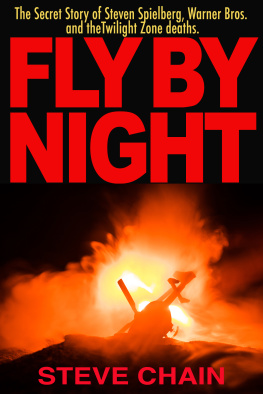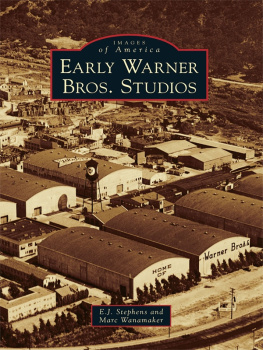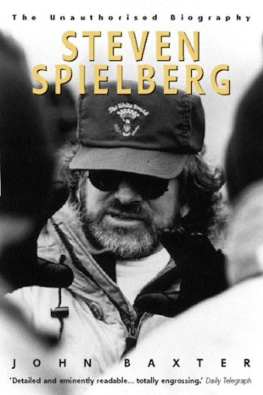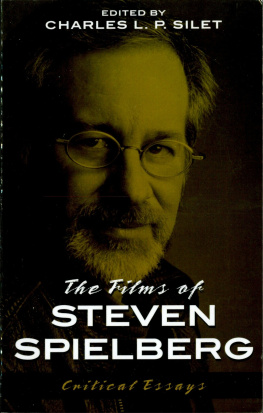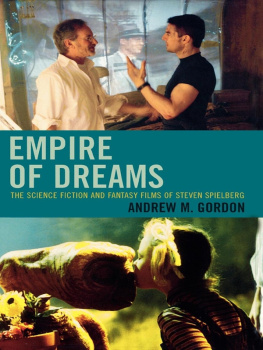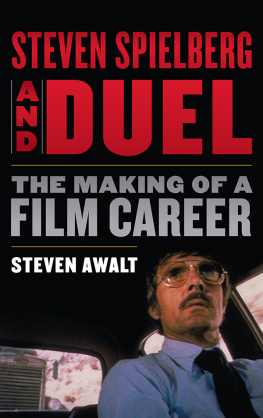FLY BY NIGHT: THE SECRET STORY OF STEVEN SPIELBERG, WARNER BROS, AND THE TWILIGHT ZONE DEATHS
Copyright 2021Steve Chain. All Rights Reserved
FLY BY NIGHT 1st ed.
p. cm.
1. Landis, John, -- 1950- -- Trials, litigation, etc . 2. Spielberg, Steven, -- 1946- -- Trials, litigation, etc. 3. Trials (Homicide) -- California -- Los Angeles. 4. Morrow, Vic, -- 1931-1982. 5. Twilight zone (Motion picture) . 6. Motion picture industry -- Accidents -- Investigation -- California. 7. Motion picture industry -- Accidents -- Investigation.
Trials (Homicide). I. Title
Prologue
Indian Dunes
Friday, July 23,1982
2:20 A.M .
F rank Marshall looked on as the cameras rolled. They were filming scene 32, a night scene, a tricky shot involving a military helicopter with a powerful searchlight beaming down on the Vietnamese village below. He watched Vic Morrow slog through the water of a shallow, sluggish stream loomed over by a dark bluff. The helicopter hovered just overhead. Marshall had worked with children before on movies like Poltergeist and E.T. , and Morrow, he saw in the brightness of the beam, was holding two children, a boy and a girl, precariously under each arm. The little girl was also holding something in her arms. It was a naked broken barbie doll.
One of the first large special effects went off in the Vietnamese village. Marshall became aware of a loud explosion, followed by a blinding light and searing heat. The blast seemed to rock the helicopter, and that instant, looking for cover, a shield against the onrushing disaster, Frank Marshall ran from the river, flinging himself beneath a truck as two more explosions, close together, rocked the earth.
A fire storm instantly leapt up.
Marshall saw that the helicopter was in trouble.
It began to fall.
About 50-60 feet to Marshalls left, on a finger of land that looked like a small island in the middle of the stream, John Landis, a crouched bearded figure clutching a bullhorn, was directing the action. Marshall watched as the director with frantic gesticulations and shrill yells of Fire! Fire! lowered the helicopter into the scene. Just a few feet behind the shaggy movie director stood Elie Cohn, the assistant director. Immediately flanking Landis and Cohn were two special effects men: Jerry Williams who had a blanket wrapped around him to keep debris from getting into his eyes and face was to his left, and to the directors right, closest to the action, Mike Milgrom, a long-time friend of Landis, was firing what looked like a rifle.
Ordinarily, Milgrom was the shows propman. Just before the action he had completed his last job for the night, giving the little girl the prop-the barbie doll--as called for by the script; minutes before the final shot, however, Landis and the special effects chief, Paul Stewart, discovered they were short-handed, and so the propman was drafted to operate the special effects gun that fired marbles simulating bullet hits.
Taking his cue when the machine guns on the helicopter opened fire, Milgrom took aim--the marbles impacted near Vic Morrow and the kids and made it seem as if the machine guns were really strafing the water.
But suddenly the marble-gunner was grabbed by the director from behind and abruptly pulled back. John Landis ordered him to stop. Vic Morrow had stumbled, dropping the little girl into the river.
Milgrom looked up.
He screamed.
The whole set scattered.
Its falling!
Richard Sawyer, the set designer, 20 feet behind Landis on the same spit of sand, turned and ran and slipped and fell in the water. Jerry Williams, a potbellied bearded giant, also turned and ran, holding the blanket as a shield. George Folsey, the films associate producer, grabbing the two parents of the children, dove into the bushes.
The huge roaring object which just a moment ago appeared to have been mounted on a pillar of light in the dark night sky sat silently on the water. Tilted sideways, it blocked the view of the Vietnam village set on the opposite shore. Vic Morrow and the kids had disappeared.
Andy House, the second assistant director, was first to discover Vics body. Believing that Vic was unconscious, he began pulling him from the water. Then he dropped the body in shock.
Landis, after running around the chopper, was standing a few feet away in the river.
Hes dead!
The director lost control. He cried hysterically. He waved his arms and beat the water. Oh, shit! Oh, shit! He was helpless and wandered aimlessly in the shallow stream.
Amidst the pandemonium, Frank Marshall, the shows executive producer, handpicked by Steven Spielberg, took command. On the side of the craft facing the smoking Vietnam village set he spotted the body of the little girl. Running to her, Marshall gathered up the crushed body, and carrying it from the river to the shore, placed it on the ground on a green furniture pad. He then returned to the water where John Landis was still walking aimlessly.
As Marshall waded John Landis back to the shore everything looked like some filmic disaster -- hazy scenes, distant cries, vague milling figures.
But it was not a movie.
It was real.
There were shouts.
The shouts were real.
Call the police!
Get on the radio!
* * *
Richard Sawyers eyes met Marshalls. They looked at each other. Both were white with shock.
OK. Richard, youve done enough. OK! Marshall said. Everything is under control. Go home.
Marshall turned to Andy House and told him not to bother with the wrap, to leave everything where it was, to send everybody home, to make sure the film was on the truck--as Marshall left he instructed House, Youre in charge now.
Some of the crew couldnt wrap right away. With millions of dollars of camera gear lying around, the cameramen stayed until they finished taking care of their equipment.
Special effects chief Paul Stewart and his crew hurriedly worked at sorting out their mortars and cables. They wrapped up all their equipment and loaded the trucks. It took no longer than ten minutes.
Andy House dazed, sickened watched the powdermen drive off.
George Folsey Jr., the films associate producer, saw Ms. Chen, the girls mother, on hands and knees wailing hysterically, cradling the girls limp body that Frank Marshall had placed on the furniture pad.
She flailed her arms. She sobbed. She shrieked.
You killed my daughter.
Ms. Chen resisted fiercely when Folsey and Marshall tried to help her into a waiting car.
She struck at the driver.
You killed my daughter.
At last the car took off with the frantic figure inside it.
The boys father clung to a tree, crying softly, I saw him, I saw him.

